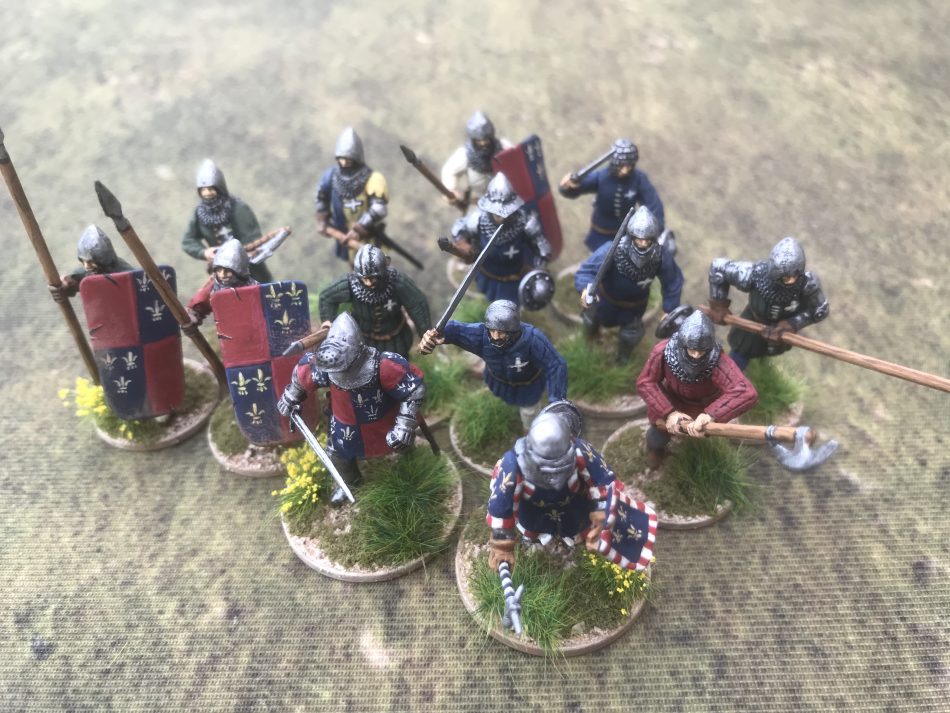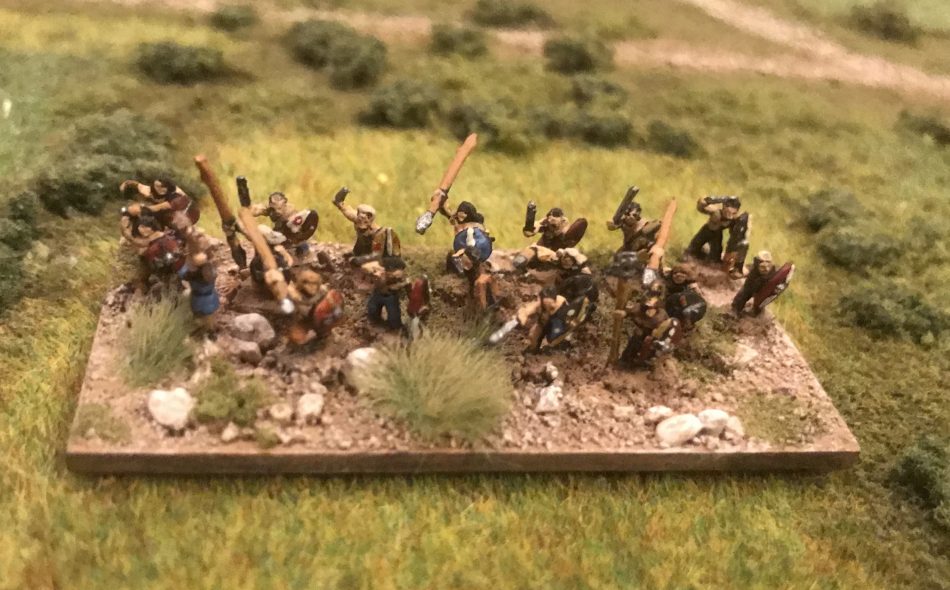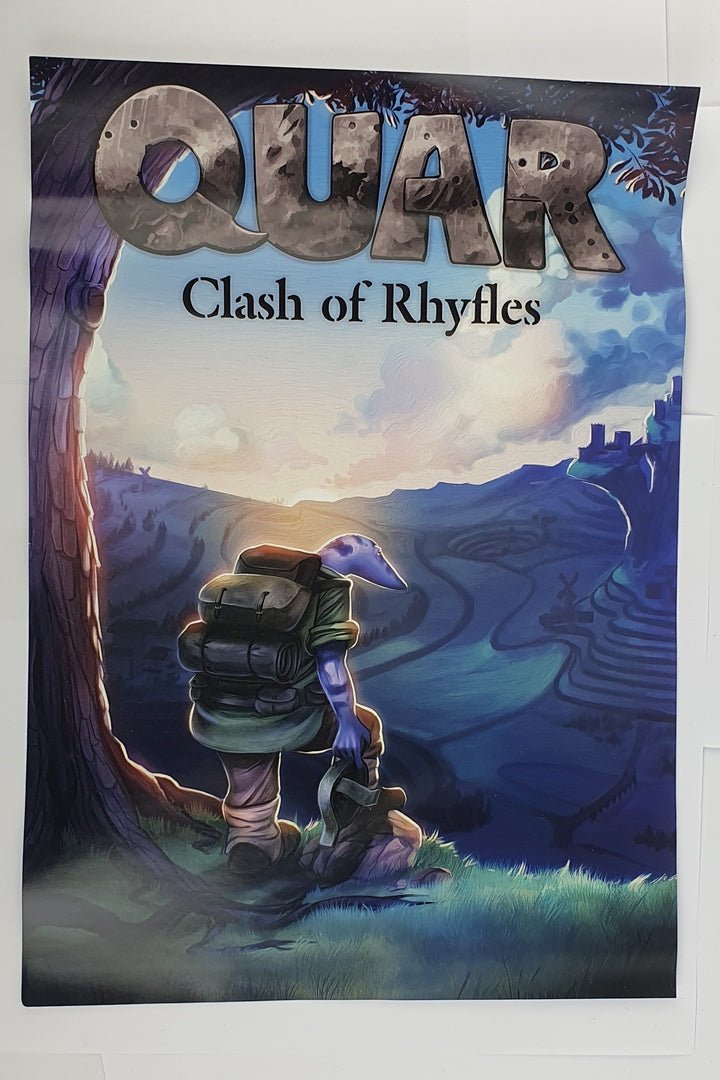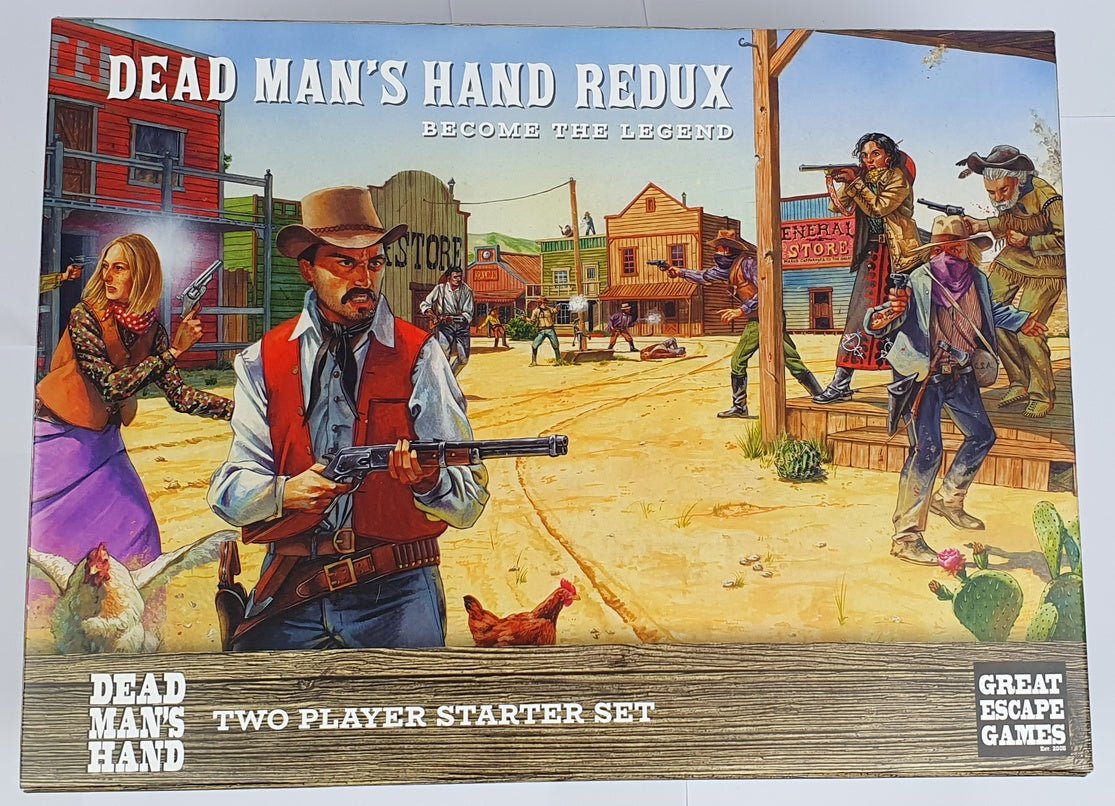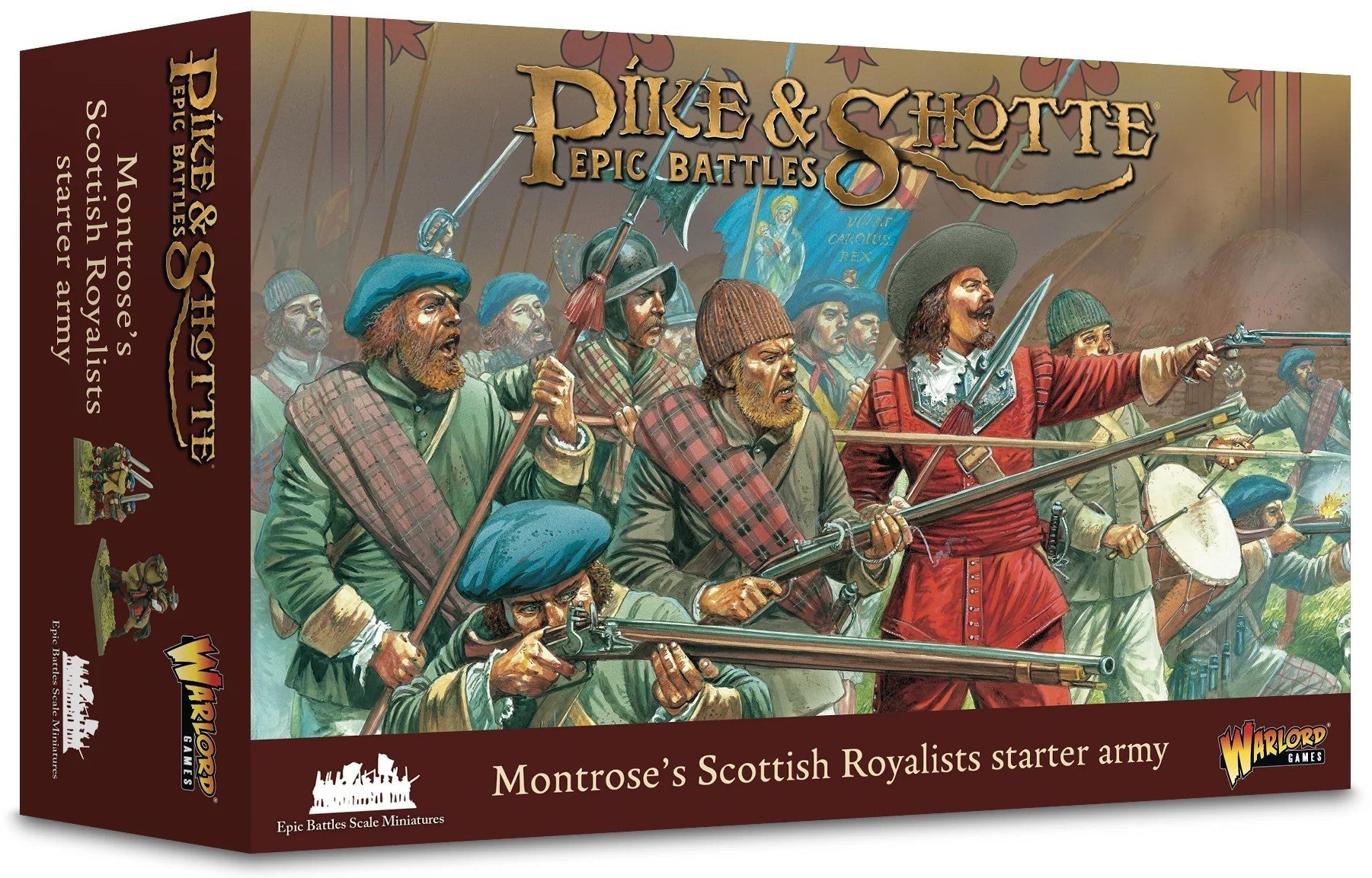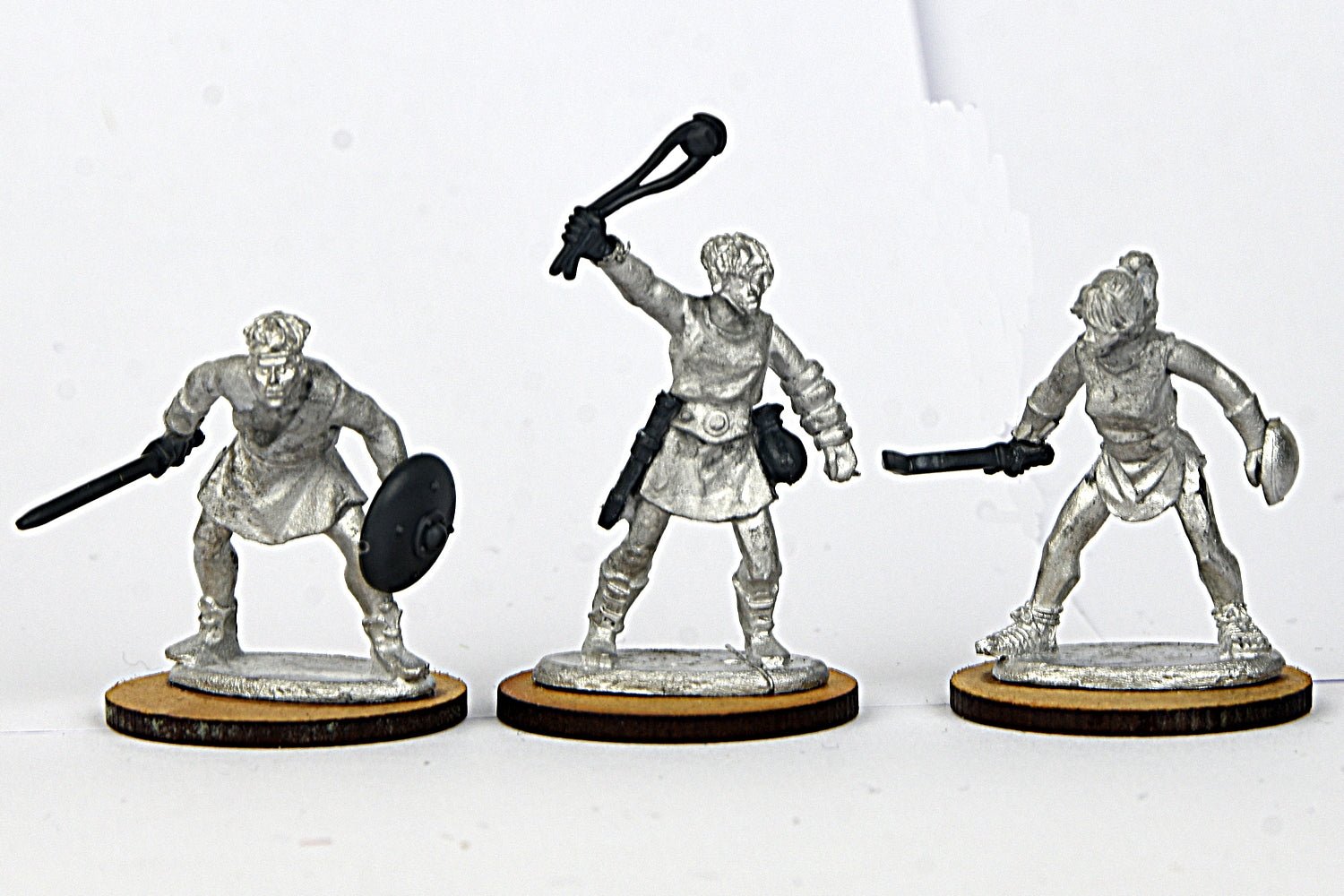Basing dilemmas
Basing can be real trauma especially for new wargamers. With so much choice in different rulesets, what should new gamers do with their newly acquired figures? It is certainly the most common question on many of the forums I frequent.
There are no hard and fast rules, so please do your research and talk to more experienced players before you commit to one style! Rebasing is one of the most unpopular parts of the wargaming hobby, but most of us have been forced to do it at one point or another.
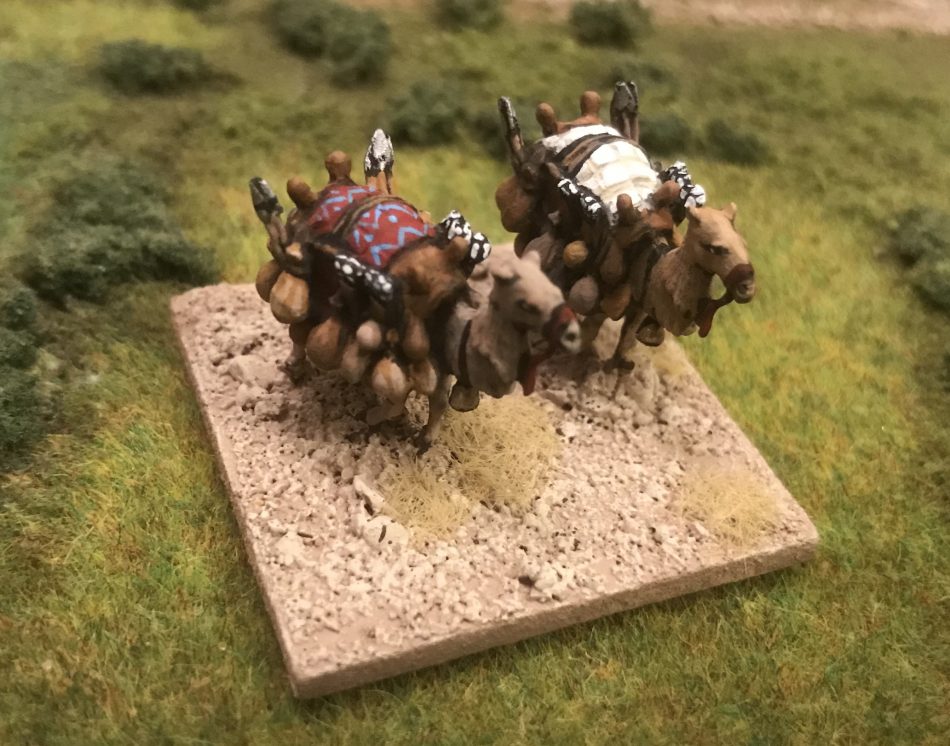
15mm camels as a baggage element. 40mm frontage and in this case 40mm deep, although most infantry bases would be between 15-30mm depending on troop type.
So what choices do we have? For larger figures in 20-28mm coins, washers, thick card and laser cut MDF bases seem the most common materials used. Oddly, coins are probably the cheapest option. A 1p UK coin has provided many of my 28mm figures with a cheap, hard wearing and suitably weighted base to keep figures upright. For skirmish games or for where units are in a more dispersed formation a 2p coin does the job nicely. For gamers reading this outside of the UK; a 1p coin is 20mm in diameter, while a 2p coin is 25mm in diameter. The slight issue with coins is they tend to rank up poorly, therefore many gamers prefer to use similar diameter square bases.
The solution to this can be sabot movement trays that individual bases can be slotted into and removed. They allow for much greater flexibility - as instead of rebasing for a new ruleset you can simply buy new sabot trays for your figures to stand in. They have really improved the speed I can deploy a large army of individually based figures and can move them on the tabletop. Detractors might criticise the increased cost of having sabots for different rulesets and the increased height of the figures. Personally I don’t really notice the height difference but thin card bottoms to the MDF sabots can reduce this issue if it is a major concern.

Cape Wars British fire at an unseen enemy in the bush. These are based on 1p coins but mounted on sabots for extra flexibility and ease of casualty removal.
Some games require larger element bases - such as Impetus. These can go anything up to 120mm in frontage. Visually I think these take some beating. Figures can be arranged to look like proper formations more easily. They can also help to protect the figures and make it much easier to grasp the bases rather than the models when you move them. They are quicker to deploy and move during a game than individual models. What they gain visually they can sometimes lose out in terms of flexibility. Casualty removal and changing formations can be tricky. Use of small dice holders at the back of larger bases can help track individual casualties.
In 15mm many rules use similar basing systems inspired by the old Wargames Research Group rules. These require a 40mm frontage for an element of between 2-4 foot figures or 2-3 cavalry. Lighter troops tend to be 2 per base. This system is so ingrained now that most new rule sets seem to accept it as pretty standard. Often larger units are made of several element bases grouped together.
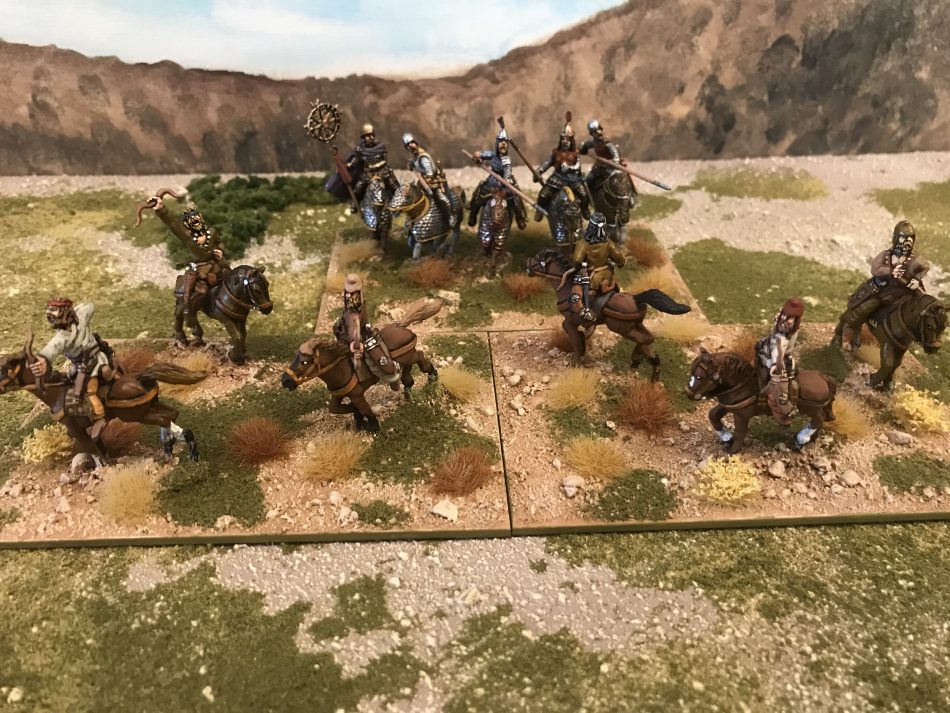
Parthian cavalry on much larger element bases are ideal for games of Impetus or Hail Caesar where units rather than individual models are the basic unit.
In 6mm scale the 60x30mm base seems to be the most common norm, although there is slightly more diversity here than in larger rules. Players tend to stick 15-30 figures on a base. Visually this means even a single base can start to look like a unit. In 10mm there is a mixture used again, many rules using the standard 15mm figure base sizes and pack on more models, while others use the larger 60x30mm bases commonly used in 6mm gaming. .
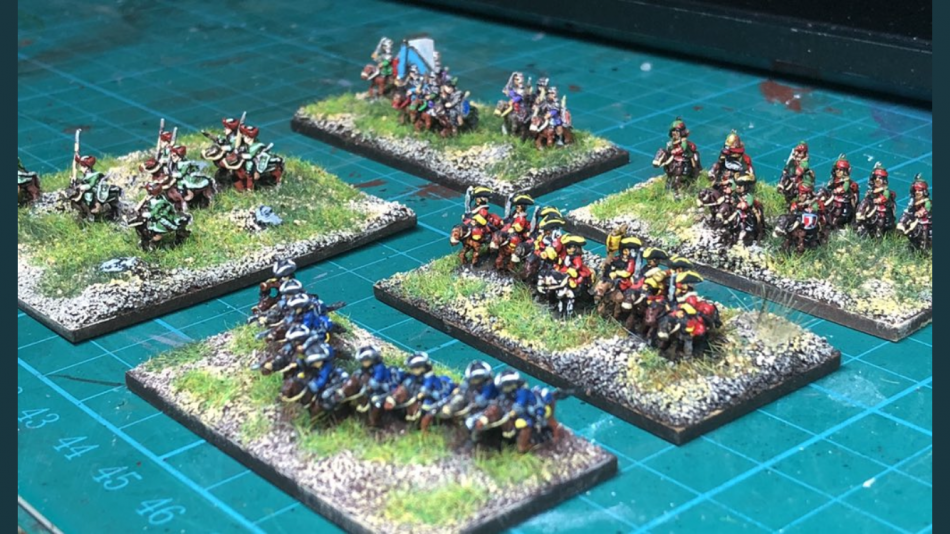
Per Broden shows how 6mm figures can be deployed in formations on 60x30mm bases to show their fighting style. Note the galloping horse at the front, compared to the ordinary horse and dragoons. The irregular cavalry has been organised on a double depth base to show their more spread out formation
A key point here is many rules these days are basing neutral. As long as units are based the same way on both sides the game will play fine. Minor differences in base size and especially depth can be ignored between friends. Take special care if you want to play competitive tournament games however as a far more strict mindset is required.

